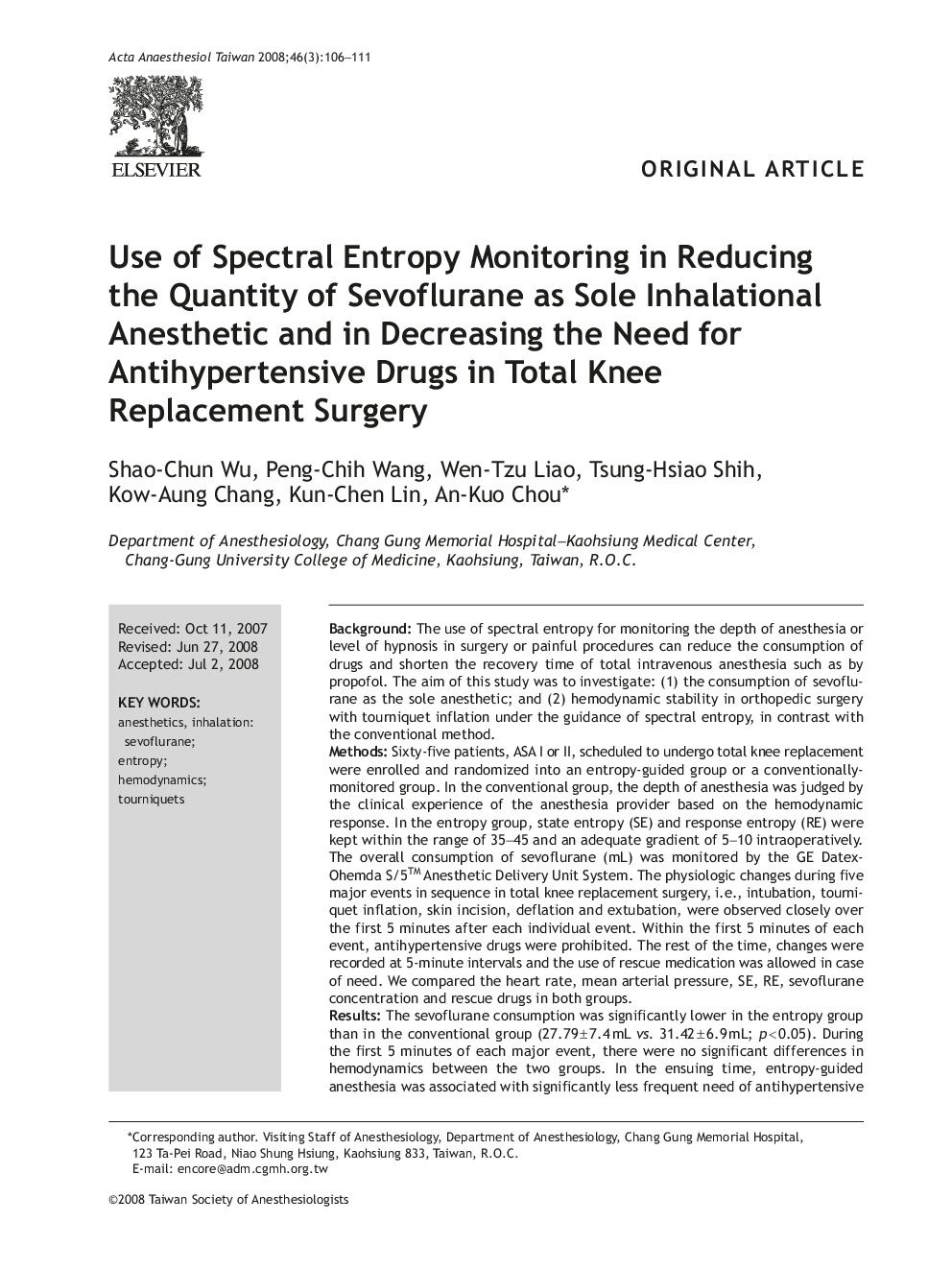| Article ID | Journal | Published Year | Pages | File Type |
|---|---|---|---|---|
| 2741700 | Acta Anaesthesiologica Taiwanica | 2008 | 6 Pages |
BackgroundThe use of spectral entropy for monitoring the depth of anesthesia or level of hypnosis in surgery or painful procedures can reduce the consumption of drugs and shorten the recovery time of total intravenous anesthesia such as by propofol. The aim of this study was to investigate: (1) the consumption of sevoflurane as the sole anesthetic; and (2) hemodynamic stability in orthopedic surgery with tourniquet inflation under the guidance of spectral entropy, in contrast with the conventional method.MethodsSixty-five patients, ASA I or II, scheduled to undergo total knee replacement were enrolled and randomized into an entropy-guided group or a conventionally-monitored group. In the conventional group, the depth of anesthesia was judged by the clinical experience of the anesthesia provider based on the hemodynamic response. In the entropy group, state entropy (SE) and response entropy (RE) were kept within the range of 35-45 and an adequate gradient of 5-10 intraoperatively. The overall consumption of sevoflurane (mL) was monitored by the GE Datex-Ohemda S/5™ Anesthetic Delivery Unit System. The physiologic changes during five major events in sequence in total knee replacement surgery, i.e., intubation, tourniquet inflation, skin incision, deflation and extubation, were observed closely over the first 5 minutes after each individual event. Within the first 5 minutes of each event, antihypertensive drugs were prohibited. The rest of the time, changes were recorded at 5-minute intervals and the use of rescue medication was allowed in case of need. We compared the heart rate, mean arterial pressure, SE, RE, sevoflurane concentration and rescue drugs in both groups.ResultsThe sevoflurane consumption was significantly lower in the entropy group than in the conventional group (27.79 ± 7.4 mL vs. 31.42 ± 6.9 mL; p < 0.05). During the first 5 minutes of each major event, there were no significant differences in hemodynamics between the two groups. In the ensuing time, entropy-guided anesthesia was associated with significantly less frequent need of antihypertensive drugs (0.94 vs. 1.48 times; p = 0.043), especially in the 45-60 minutes after tourniquet inflation (p = 0.012).ConclusionsUsing spectral entropy monitoring for guiding the depth of sevoflurane anesthesia in total knee replacement surgery can reduce its consumption and the frequency of use of antihypertensive drugs.
